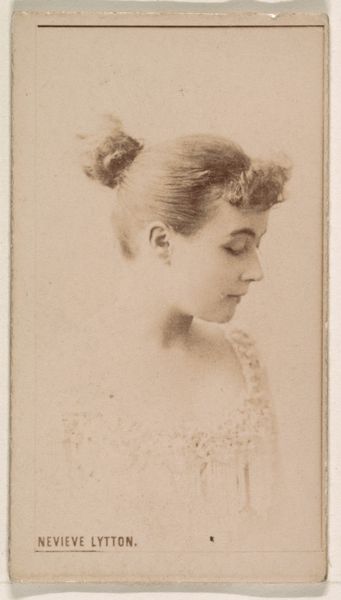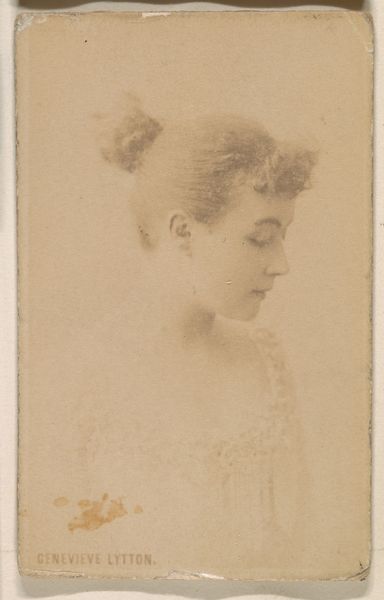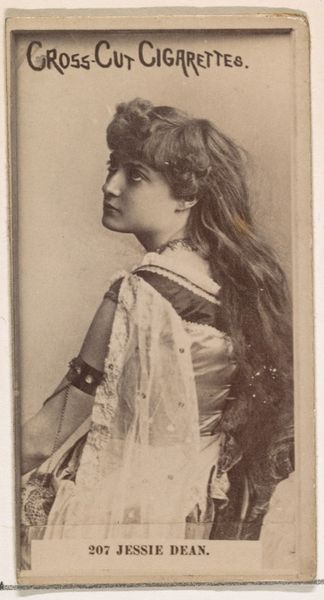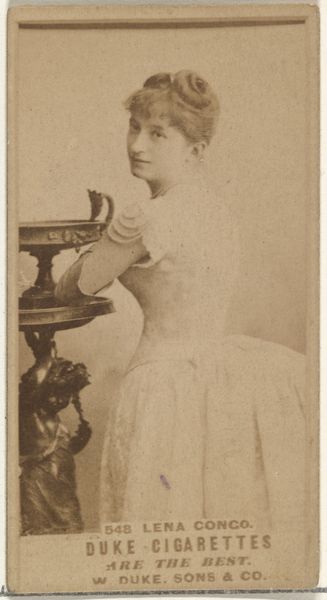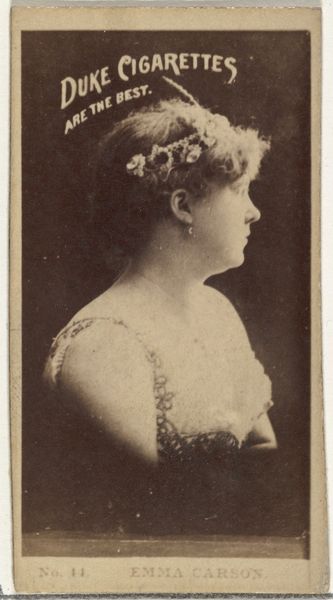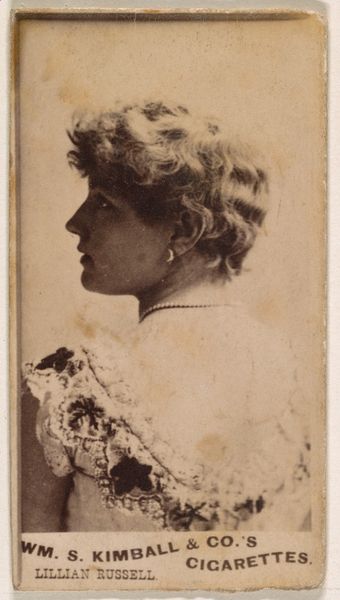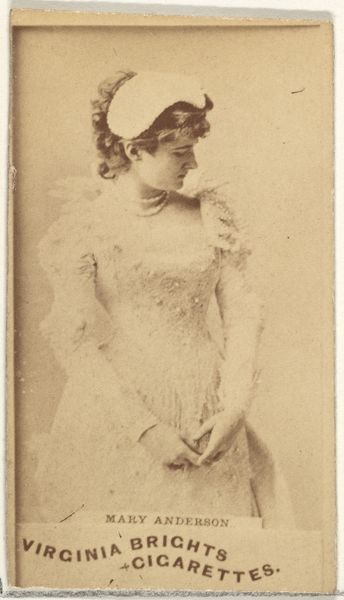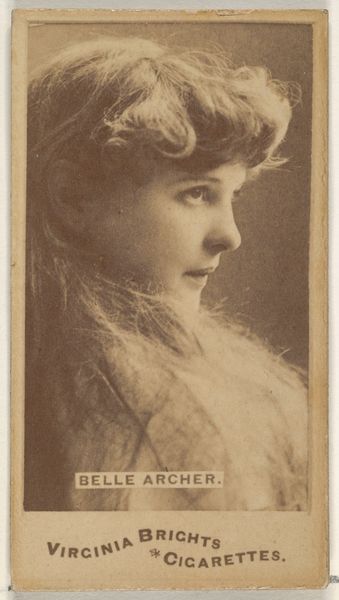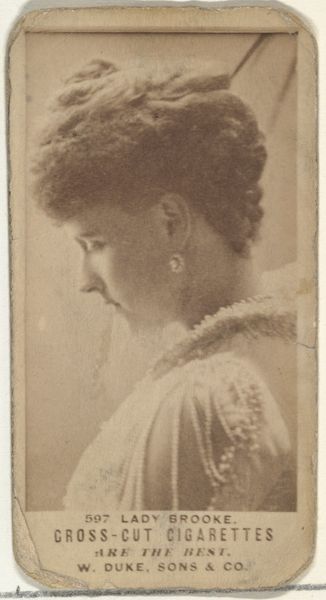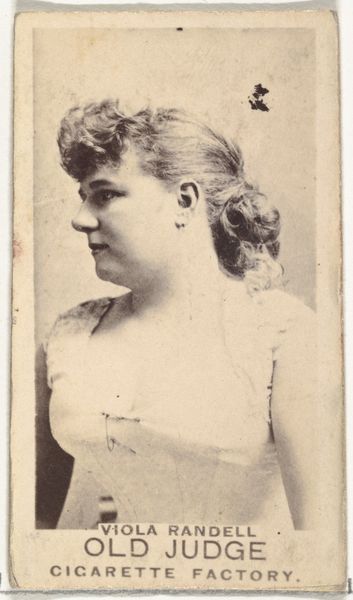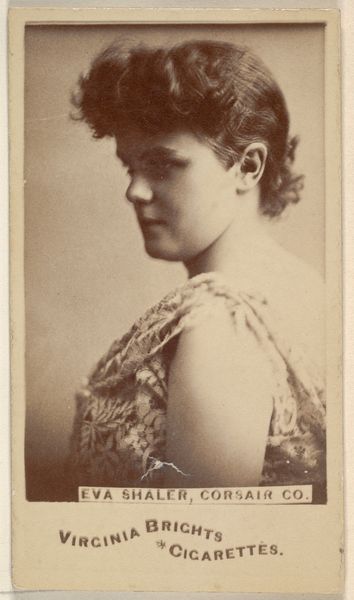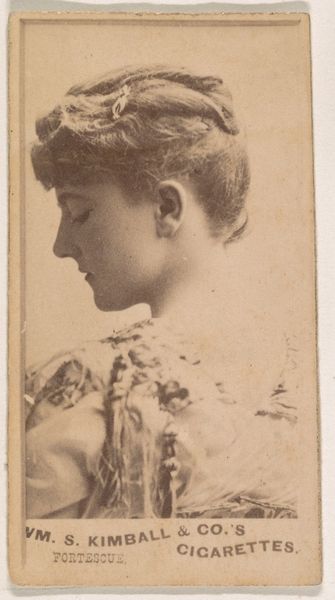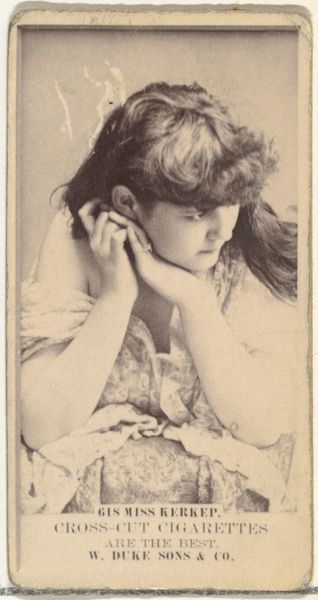
Card Number 314, Cynthia Granger, from the Actors and Actresses series (N145-3) issued by Duke Sons & Co. to promote Cross Cut Cigarettes 1880s
0:00
0:00
drawing, print, photography, albumen-print
#
portrait
#
drawing
# print
#
photography
#
19th century
#
albumen-print
Dimensions: Sheet: 2 11/16 × 1 3/8 in. (6.8 × 3.5 cm)
Copyright: Public Domain
Curator: This albumen print from the 1880s depicts Cynthia Granger, and it comes to us from the Actors and Actresses series (N145-3) issued by Duke Sons & Co. to promote Cross Cut Cigarettes. Editor: What immediately strikes me is the ethereal quality of the photograph. It almost floats, as though wrested from an Impressionist canvas. It’s interesting to see that this dreamy vision was used to sell cigarettes, though. Curator: Indeed. From a formal perspective, we observe a very tight crop; a deliberate strategy to draw attention to her profile and delicate features. Note the softness of the light, and the slight blurring which accentuates her gentle expression. The lack of sharp lines further contributes to that dream-like state you astutely noticed. Editor: Absolutely, but I see also the very precise industrial processes and labour involved in reproducing such images on a mass scale as cigarette cards. Think about the choices of materials—the albumen print itself, coated and precisely cut, packaged into tobacco products meant for everyday consumption by the working class and upper class alike. This object transcends its high art impression. Curator: And yet, if we disregard the context for a moment, and concentrate on the semiotics of the image, doesn’t the very act of portraiture speak to themes of immortality and representation? Doesn't the arrangement, that soft downward glance, convey notions of delicacy, even vulnerability? Editor: I can concede that there are clear representational aims in portraying Granger, which we interpret as "beauty" because we recognize the coded indicators for that in 19th-century America. But her image and fame, though limited, was essentially used as product marketing material for the tobacco industry and its distribution networks. What price do you pay for that sort of immortality? Curator: An intriguing consideration! Thank you for allowing me a refreshed perception of this unique artwork, one which I perhaps held at too much of a distance. Editor: And thank you, I’m grateful for the chance to also understand the more lasting effect this type of image had on how Americans interpreted celebrity and commercial culture.
Comments
No comments
Be the first to comment and join the conversation on the ultimate creative platform.
